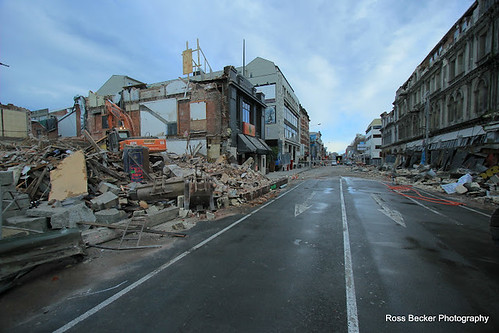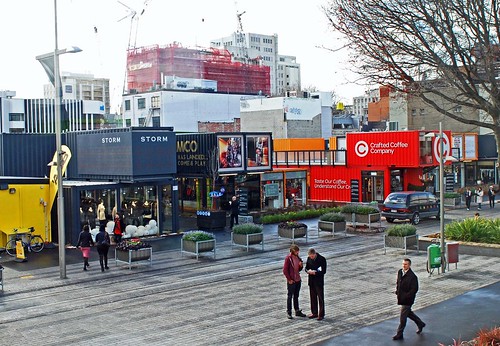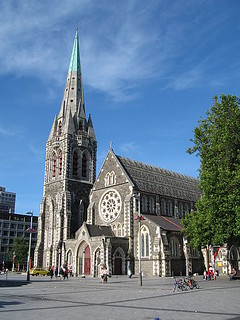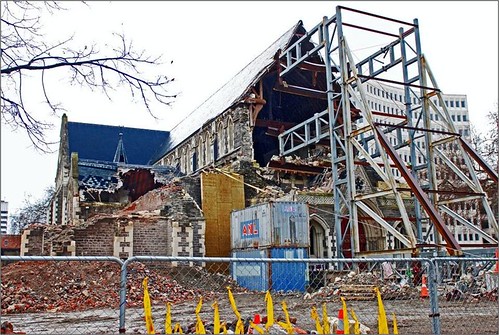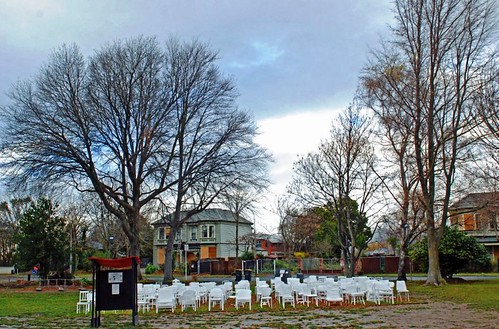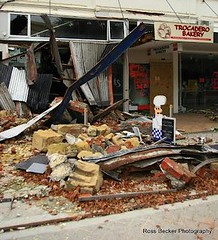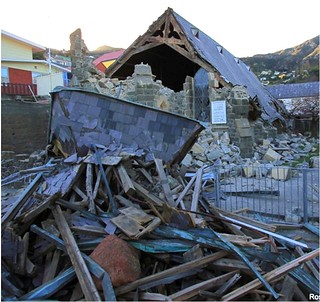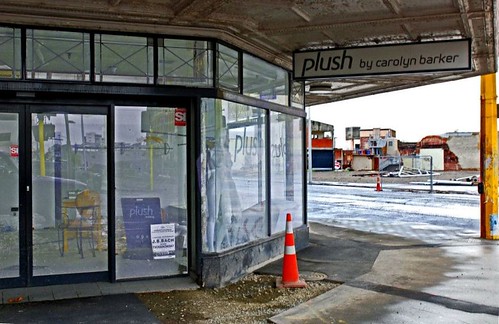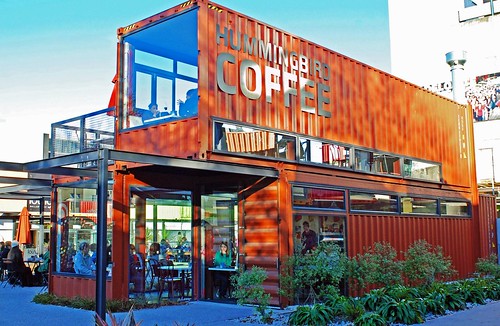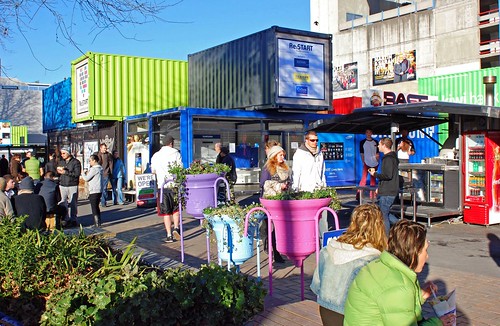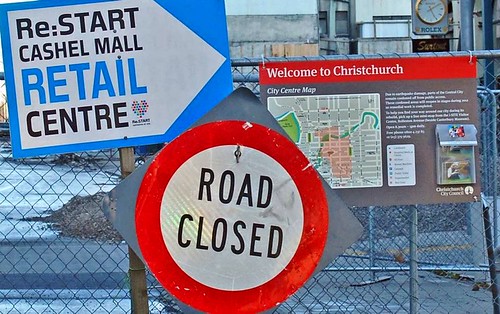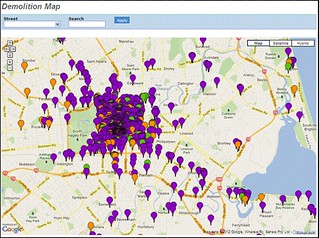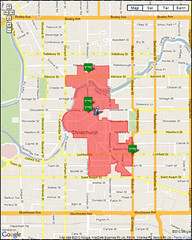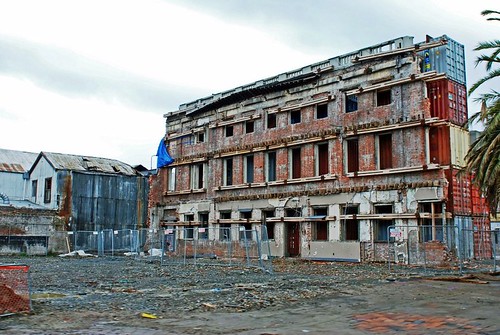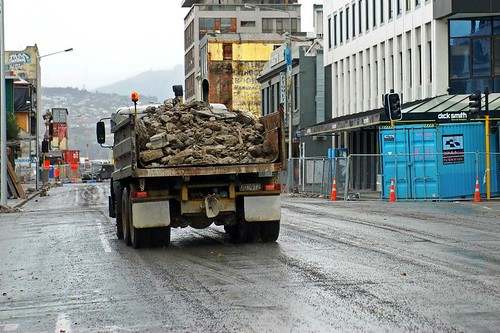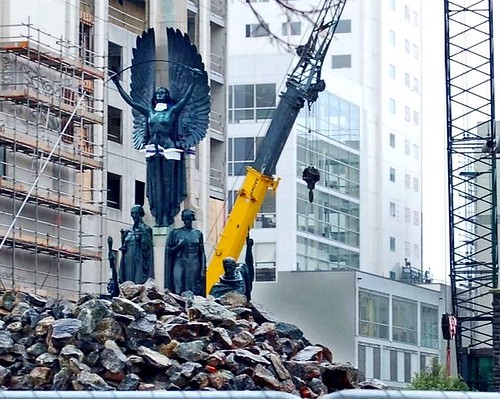Rebuilding downtown from scratch: striking images and a video from Christchurch

Posted June 22, 2012 at 1:32PM
After the quake
Today, retail reborn with shipping containers in the Re: START mall
Christchurch, a city of about 367,000 people (460,000 including the near surrounding area) and New Zealand’s second largest, has been forced to reconceive its downtown and many neighborhoods following a disastrous series of serious earthquakes beginning in 2010. The most devastating struck on February 22, 2011. The number and complexity of web-based sources on Christchurch’s earthquakes are daunting, but this passage from the city’s Wikipedia entry gives a succinct summary:
“Nearly six months later on Tuesday 22 February 2011, a second earthquake measuring magnitude 6.3 struck the city at 12:51 pm. It was located closer to the city [than the September 2010 quake], near Lyttelton at a depth of 5 km. Although lower on the moment magnitude scale than the previous earthquake, the intensity and violence of the ground shaking was measured to be MM IX, among the strongest ever recorded globally in an urban area and in total 185 people were killed with nationals from more than 20 countries among the victims. ChristChurch Cathedral lost its spire and widespread damage was caused across Christchurch to buildings and infrastructure already weakened by the 4 September 2010 earthquake and its aftershocks. Significant liquefaction affected the eastern suburbs, and the total cost to insurers of rebuilding has been estimated at NZ$20–30 billion.”
Before
Now
Makeshift church, where a real church once stood
In addition to the earthquakes that hit the city in September 2010 and February 2011, there were further earthquakes or large aftershocks in June 2011, December 2011 and January 2012. (These are sometimes called “Canterbury” earthquakes because Christchurch is the principal city of the Canterbury region of New Zealand.)
Compounding the obvious damage to structures that fell, liquefaction caused the upwelling of 200,000 tons of silt, causing additional ground movement, undermining building foundations and destroying infrastructure. The New Zealand Society for Earthquake Engineering believes the damage following the September 2011 event from liquefaction "may be the greatest ever recorded anywhere in a modern city". Eighty percent of the water and sewage system was severely damaged.
Left, Cashel Street; Right, Old Union Church, Winchester Street
Vacant retail in the downtown Red Zone
Utter devastation of cities from disaster, whether caused by nature or humans, is never unprecedented but always unique to circumstances. Wartime experiences come to mind immediately. But, when the damage is caused by or associated with a natural event such as, in this country, the tornado that leveled Greensburg or the flooding that followed Hurricane Katrina in New Orleans, special thought must be given to where and how to rebuild. That is now the task faced by Christchurch - which, despite the overwhelming tasks ahead (many buildings not leveled by the quakes must be demolished anyway because they are now unsafe), is showing some remarkable signs of resilience and vitality.
Making good use of shipping containers at the Re: START mall
With a near-monopoly on downtown retail, Re: START attracts a lively clientele
Go there, not here
Central to the complex recovery strategy has been the designation of “green zones” where the government is sanctioning and in many cases assisting the rebuilding of structures and “red zones” where “the land has been so badly damaged by the earthquakes it is unlikely it can be rebuilt on for a prolonged period.” In the residential red zones, the government is essentially buying property from landowners.
Left, location of demolitions; right, downtown Red Zone as of June 2012
The most visible and challenging section is the red zone of the central business district, where many tall structures were or are still located. Within a cordoned boundary, engineers and city workers have been going through the painstaking process of cleanup, building-by-building site assessment, and demolition and removal where required. Access to the red zone is highly restricted, though the restricted area has been shrinking as damage assessment progresses; when work in a given portion is completed and remaining structures have been determined to be safe, business owners, tenants and their staffs are allowed to re-enter and resume operations once specified conditions are met.
Shipping containers support historic facade
Hauling debris from the Red Zone
Hope among the ruins
My friend G.B. Arrington, a land use and transportation planner long recognized for his contributions to walkable and transit-oriented urbanism, is among those who have been retained to advise the city on where and how to plan and rebuild within the downtown. That makes the task no less daunting, but the citizens of Christchurch can at least be reassured that they are in capable hands. Many of the photos accompanying this post are GB’s, taken in the downtown red zone during a trip earlier this month. He has kindly allowed me to publish them here.
In addition, this local news video gives a startling sense of the tragedy as it occurred:
Related posts:
- Shipping container "cities" bring creative, funky approach to green construction (May 11, 2012)
- Rebuilding an affordable, sustainable community in Galveston (November 29, 2011)
- New Orleanians, rebuilding with sustainability (NOLA resilience Part 3) (May 13, 2011)
- Rebuilding Haiti, quickly and thoughtfully (February 16, 2010)
- Haiti update: Mourning, builder, architects donate emergency homes, work for more (March 2, 2010)
Move your cursor over the images for credit information.
